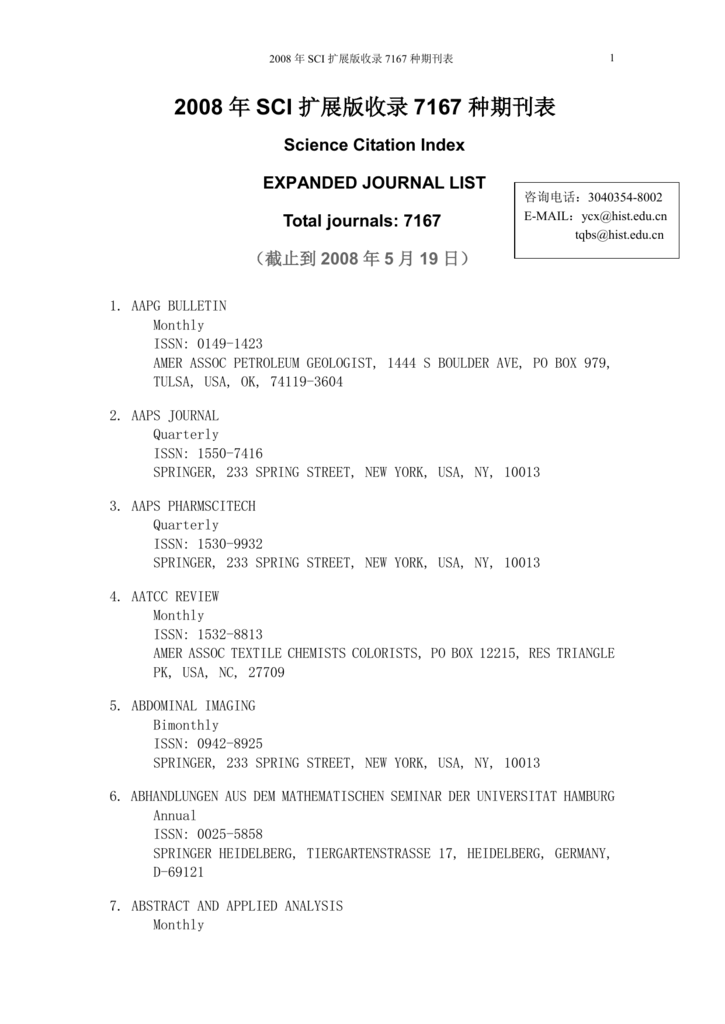
In the most serious cases of breaches in the journal’s editorial standards, as determined by our selection criteria, published content may be removed from Web of Science™. If the journal meets the quality criteria, any missing content will be indexed. If the journal is removed from coverage, content will not be backfilled. or remain covered if it continues to meet the quality criteria.be removed from coverage if it no longer meets the quality criteria.If concerns are raised regarding an indexed journal, either by users or through monitoring by our in-house editors, the journal will be re-evaluated according to our selection criteria. Where significant concerns are raised about the quality of the content published by the journal, new content will not be indexed during the course of the re-evaluation. When the evaluation is complete, the publisher will be informed of the outcome and the journal will either: Typically, the Web of Science editorial team focuses on new evaluations during the first half of the year and prioritizes re-evaluations in the second half. We use a journal’s estimated JIF – not its Journal Citation Indicator (JCI) – as the metric to assess journal-level citation activity when applying our impact criteria. Our current strategy is to re-evaluate ESCI journals that have an estimated Journal Impact Factor™ (JIF) that places them in Q1 or Q2 in the JIF ranking of their relevant flagship category. If both quality and impact criteria are met, the journal moves to a flagship collection. In this process, journals are re-evaluated for quality first and impact evaluation is subject to quality being met. Journals in ESCI are re-evaluated for possible inclusion in SCIE, SSCI or AHCI when their citation activity indicates that the impact criteria may be met, regardless of the time since their last evaluation. Any journal that fails to meet the 24 quality criteria will be removed from the Web of Science Core Collection.

Similarly, SCIE, SSCI and AHCI journals that decrease in impact move to ESCI. ESCI journals that gain impact move to SCIE, SSCI or AHCI.

These are dynamic collections subject to continuous curation to ensure journals are in the appropriate collection. We use the term “flagship” to collectively refer to SCIE, SSCI and AHCI. Journals that meet the additional impact criteria enter Science Citation Index Expanded™ (SCIE), Social Sciences Citation Index™ (SSCI) or Arts & Humanities Citation Index (AHCI) depending on their subject area. Journals that meet the quality criteria enter Emerging Sources Citation Index™ (ESCI).

We use a single set of 28 criteria to evaluate journals these are divided into 24 quality criteria designed to select for editorial rigor and best practice at the journal level, and four impact criteria designed to select the most impactful journals in their respective fields using citation activity as the primary indicator of impact. The basic principles of our selection process remain the same: objectivity, selectivity and collection dynamics.

This level of in-house editorial curation contrasts with methods used to create other commercially available databases that rely on predominantly algorithmic approaches and/or delegate aspects of editorial decision making to the research community. The curation process for Web of Science Core Collection™ is unique: our editorial decisions are conducted by our expert in-house editors who have no affiliations to publishing houses or research institutes thus removing any potential bias or conflict of interest.Įach editor is focused on specific subject categories enabling them to gain a deep, nuanced knowledge of the journals in that field. Web of Science Core Collection: Journal Selection Process


 0 kommentar(er)
0 kommentar(er)
